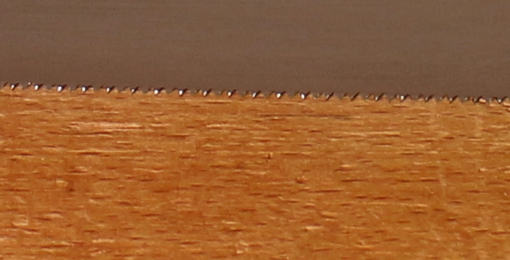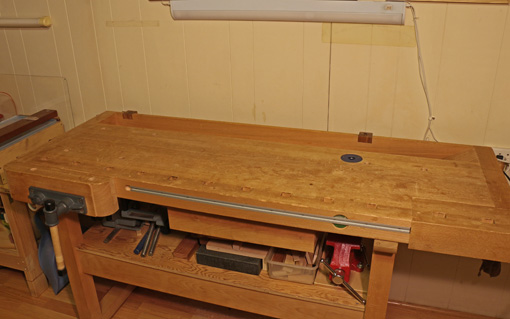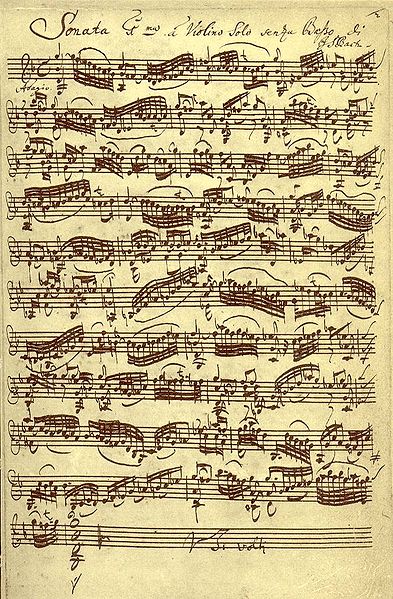
Finer pitch saws generally produce more precise cuts than coarser pitch saws. Well, of course they do. The finer teeth make a cleaner kerf with which to track a line. They also advance the kerf more slowly and thus presumably more controllably since each stroke is a relatively smaller commitment that can be adjusted as needed.
The finer pitch, all else being equal, also produces a smoother sawn surface. Also, the thickness of the wood must be taken into account. At least several teeth should ride in the kerf to maintain control and prevent the saw from grabbing and tearing.
So, OK, we don’t use a 5 1/2 ppi rip saw to cut dovetails in 1/2″ stock, obviously.
But what may not be so obvious are the practical limits to fine pitch saws. In other words, finer and finer is not more and more accurate.
If each commitment – each stroke of the saw – is too small to judge whether accuracy is being maintained, then you have to wait for a few of them to really make a judgment. In other words, the feedback is delayed and you can be going off course without knowing it for a while. Similarly, the corrective action is harder to judge.
The object is to use a tool that is palpably controllable, not too coarse, of course, but also not too fine. Among novice woodworkers there is a tendency to think that using the finest saw available will be the most accurate way as long as one is patient enough, but for a saw, and probably for just about any tool, it might be too fine to function accurately. Note also that the stroke speed of a coarser pitch saw can be slowed to some extent.
As an analogy, a good car steering wheel should be responsive, not mushy. The result of an input action – such as a saw stroke – should give a sufficiently sensible and prompt result so that the feedback loop is closed clearly and quickly. This is much of what hand tool woodworking is about. In other words, if you go too slowly, you can’t tell what you’re really doing!
In summary, consider balancing factors when choosing the pitch of a saw. And don’t be charmed by superfine saws (e.g. superfine dozuki saws) or see them as a substitute for skill; they may be too fine.





